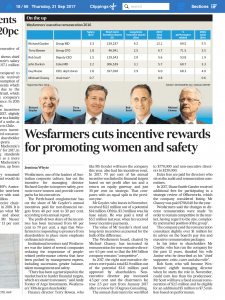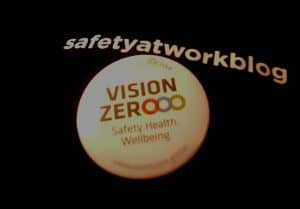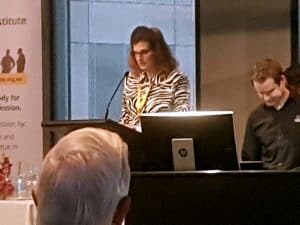The Future of Leadership roadshow was only partly about its topic. Much of it felt like a professional development day with interesting speakers and storytellers. By providing stories of failure, reconciliation, and unlearning the organisers could argue that they were also creating future leaders.
A previous article briefly discussed Dan Gregory’s presentation. One additional element was the catalyst for his Directorship of White Ribbon – a poster which reframed the issue of violence against women as an issue that men can affect. Gregory was advocating being open to alternative perspectives of your reality, your lived experiences, career, communication and profession. He challenged the audience, as Daniel Hummerdal does his safety audience, to look differently, to look creatively and to analyse our personal and organisational motivations.
Like all good conference speakers, Dan Gregory does not tell you what to think but how to think, and treats the audience like adults who are in charge of their own decisions.

 Today’s issue of the Australian Financial Review (AFR) contained an article that shows that the trend for companies and boards embracing their occupational health and safety (OHS) obligations is not uniform. The article “W
Today’s issue of the Australian Financial Review (AFR) contained an article that shows that the trend for companies and boards embracing their occupational health and safety (OHS) obligations is not uniform. The article “W The
The  A major theme of the
A major theme of the  In front of thousands of delegates and dignitaries, the 21st World Congress on Safety and Health was officially opened yesterday by the Singapore Prime Minister
In front of thousands of delegates and dignitaries, the 21st World Congress on Safety and Health was officially opened yesterday by the Singapore Prime Minister  WorkSafe Victoria’s Executive Director, Health and Safety ,
WorkSafe Victoria’s Executive Director, Health and Safety ,  Innes Willox of the
Innes Willox of the